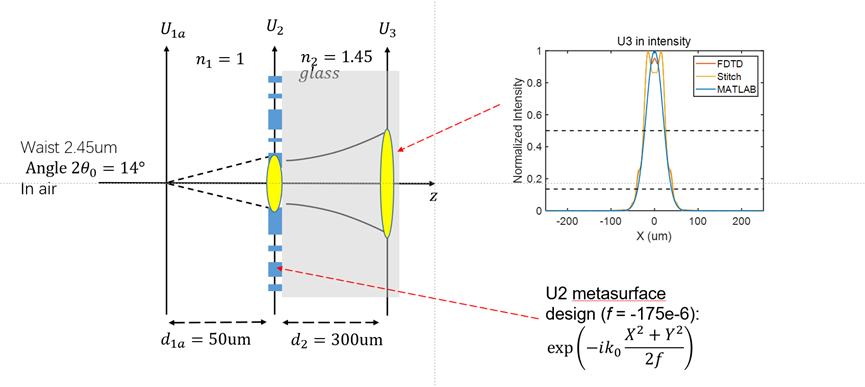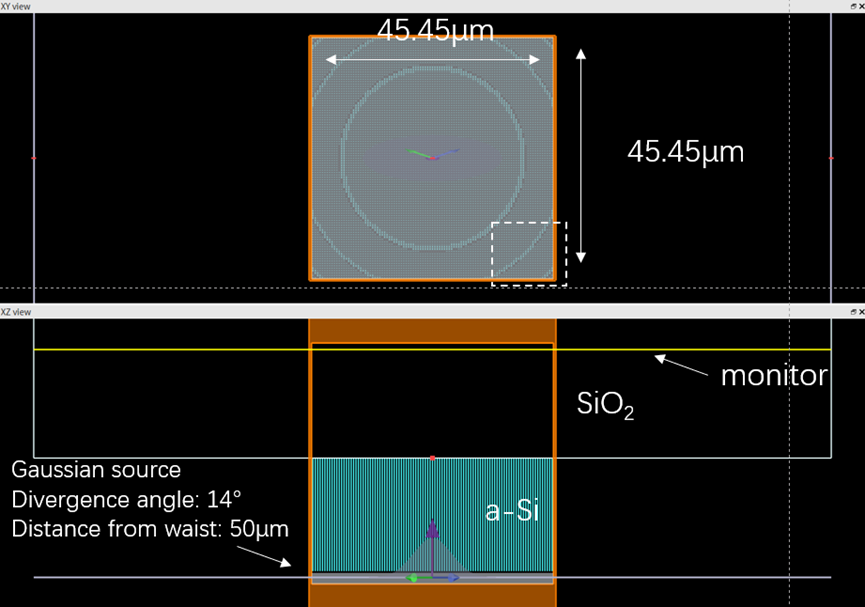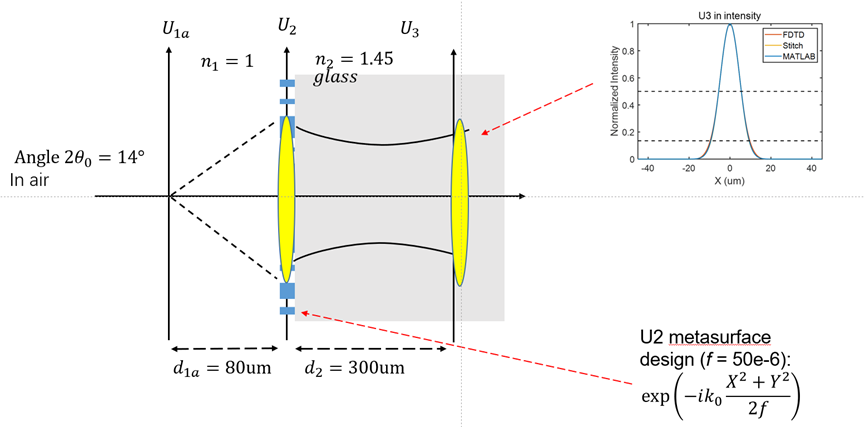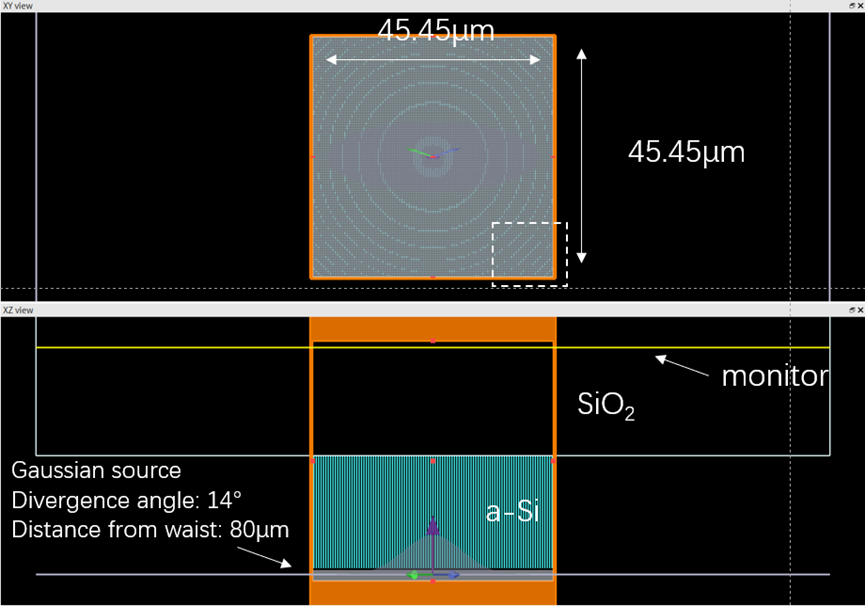TAGGED: metalens
-
-
December 10, 2024 at 3:31 am
xuanlunhuang20
SubscriberHi, I'm doing the metalens simulation. I found that there is a deformation in the far-field distribution for the diverging lens, but it will not have this problem for the focusing lens. What’s the reason for this?
Specifically, I set up a concave lens with Silicon on glass metasurface (which serves as a beam spreading function and has a negative focal length f), and then calculate the farfield at 300um using “farfieldexact3d”. I compared three methods: FDTD direct simulation /Near field stitching/MATLAB calculation, and found that for concave lens, the far-field results of FDTD or Near field stitching would have a shape deformation in the middle of the far-field distribution (like a dip or a ripple). The following is the scheme diagram and FDTD setup of the concave lens simulation:
However, for convex lens (which have the function of focusing and the focal length f is positive), the results obtained by the three methods are very consistent, and there is no deformation. The following is the scheme diagram and FDTD setup diagram of the convex lens.
For concave lens, I tried to raise the meshing to 3. For FDTD, the dip in the middle will change. I also tried a longer propagation distance (1000um) and found that there are still some ripples or shape deformation.
-
December 11, 2024 at 7:09 am
anna.wirth-singh
Ansys EmployeeHello,
Thanks for the detailed explanation. This is a complex problem, so it may be difficult to narrow down the source of the error. If I understand your approach correctly, you are using FDTD (either directly or with field stitching) to obtain the near field some distance above the metalens, and then you use farfieldexact3d to calculate the far-field. Is that correct?
It will be beneficial, if possible, to narrow down whether the issue is occurring in the calculation of the near field or in the calculation of the far field. As a first step, I would recommend using a movie monitor or frequency domain field profile monitor to record a cross-section of the field as it propagates and look for any unexpected behavior.
Since your metasurface is a diverging lens, it is spreading the light out to the boundaries of the simulation – is that right? Therefore, if there are any issues with the boundaries, they may be more pronounced in the case of this lens than the typical metalens. Are you using PML boundaries on all sides of the simulation? Since light may be directed to large angles, I recommend using the ‘steep angle’ PML profile. You can also try increasing the number of PML layers.
At the plane U2 where the far-field is calculated, does the field profile extend all the way to the edges of the monitor? It may be beneficial to use a slightly larger simulation region (in x and y) to try to mitigate any edge effects. My initial suspicion is that simulation boundary conditions may play a role in the results you are seeing. If the field is not interacting with the boundaries, then we will have to look for other explanations.
Best,
Anna
-
- You must be logged in to reply to this topic.



-
3467
-
1057
-
1051
-
929
-
896

© 2025 Copyright ANSYS, Inc. All rights reserved.












